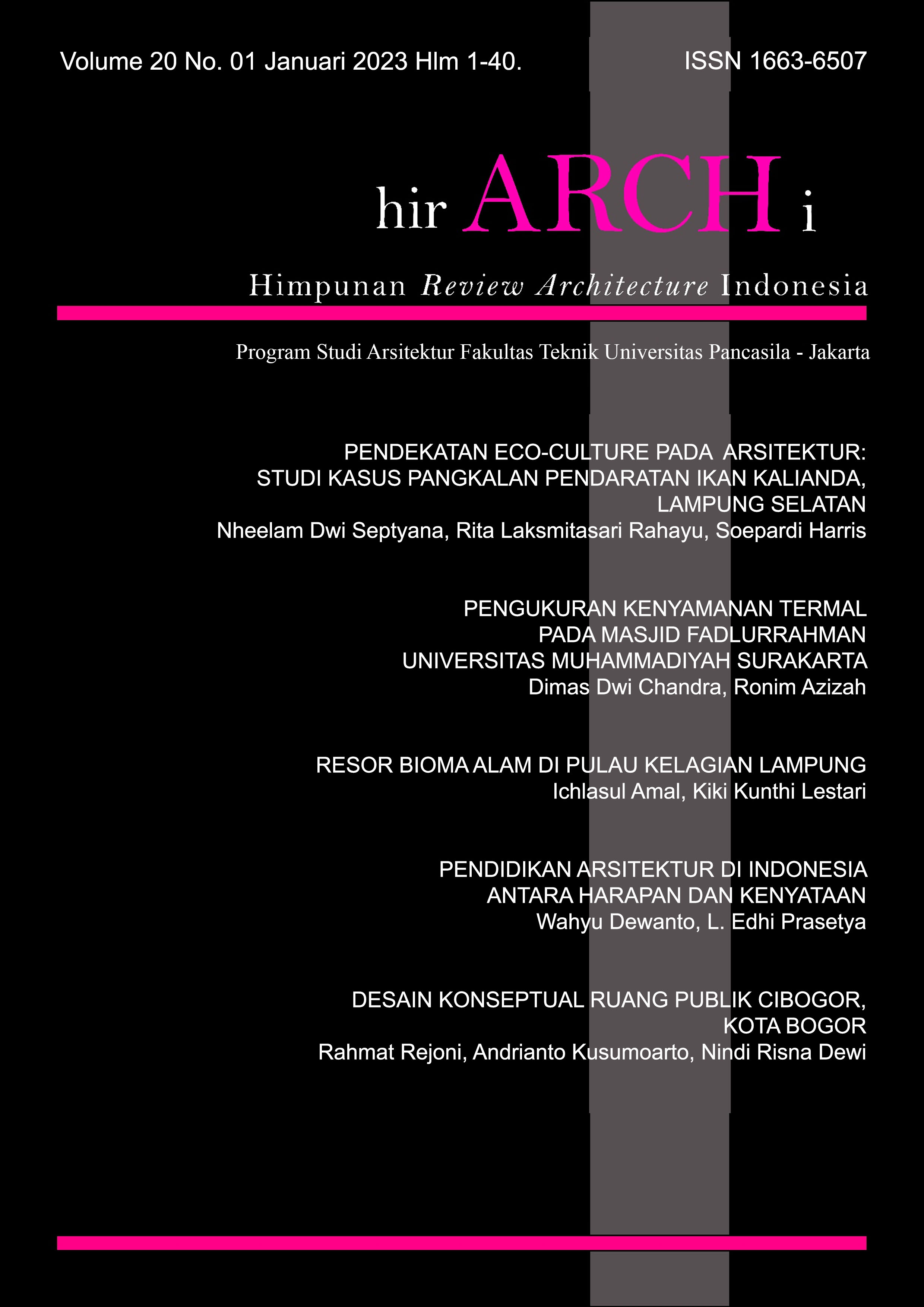RESOR BIOMA ALAM DI PULAU KELAGIAN LAMPUNG
Abstract
Given that Indonesia is a maritime nation surrounded by several beaches, a beach is a location that is frequently visited by visitors. Despite the numerous advantages that nature offers people, people do not treat nature with the same respect, and as a result, many natural tourist attractions suffer purposeful or inadvertent harm. Given the numerous issues with nature all around us, this research seeks to construct a resort in a coastal region with an ecological design theme. The goal is to develop a tourist destination that serves as a place of exhaustion for visitors and fosters mutualism with nature to prevent damage to the environment, which has occurred to tourist attractions as a result of irresponsible human behavior. One of Lampung's coastal tourism attractions is Kelagian. The object has only recently received enough exposure for the author to get interested in creating designs there. Exploratory qualitative research methodology was used in this study. Using this technique, design illustrations can be produced that reflect the building's intended aesthetic. This structure is anticipated to become one of those that can foster a mutualistic relationship between nature and humankind.
References
J. M. Echols, Kamus Inggris-Indonesia. Jakarta: Gramedia, 1987.
-, “‘The world’s biomes,’” 2008. [Online]. Available: www.ucmp.berkeley.edu. [Accessed: 25-Nov-2011].
P. et sl. Krusche, Oekologisches Bauen. Berlin: Wiesbaden, 1982.
F. X. B. Frick, Heinz; Suskiyatno, “Dasar-dasar eko-arsitektur : konsep arsitektur berwawasan lingkungan serta kualitas konstruksi dan bahan bangunan untuk rumah sehat dan dampaknya atas kesehatan manusia.” Kanisius, Yogyakarta, 1998.
I. A. Suhada, “Penerapan Prinsip Eko Arsitektur. Studi Kasus Perencanaan Kawasan Wisata Ponggok Ciblon,” Angewandte Chemie International Edition, 6(11), 951–952., pp. 2013–2015, 2018.









